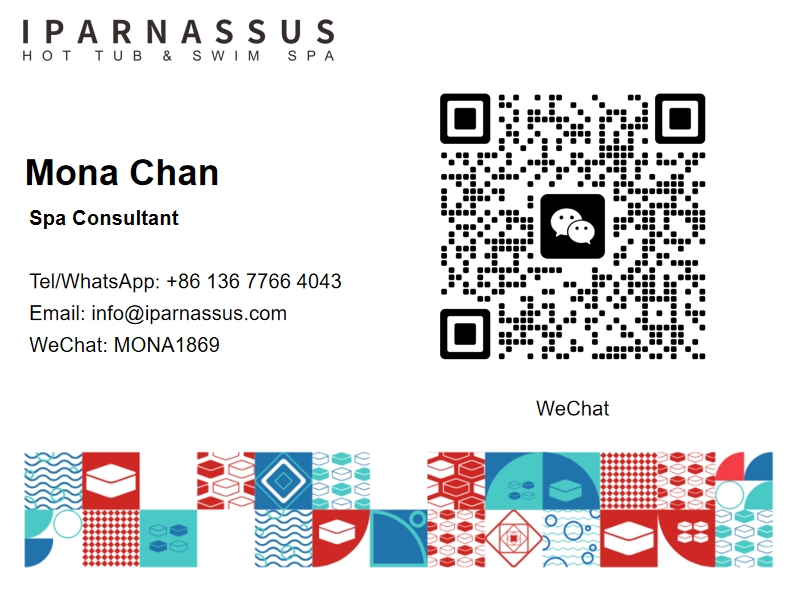What does eo2 mean on a hot tub?
2025-07-04 17:58:30
When you encounter the EO2 error code on your hot tub display, it's typically indicating a sensor-related issue that requires immediate attention. The EO2 error code is commonly found on various hot tub brands and usually signals a problem with the temperature sensor or sensor circuit malfunction. This error can prevent your hot tub from heating properly and may compromise the overall functionality of your spa system. Understanding what EO2 means and how to address it is crucial for maintaining your hot tub's performance and ensuring safe operation. While this error might seem alarming, most EO2 issues can be resolved with proper troubleshooting techniques or professional assistance.
How Do I Fix Error Codes on My Hot Tub?
Basic Troubleshooting Steps for Hot Tub Error Codes
The first step in addressing any hot tub error code, including EO2, is to perform a complete system reset. Turn off your hot tub at the main power source, wait approximately 30 seconds, then restore power to allow the system to reboot. This simple reset can often resolve temporary sensor glitches that trigger error codes. If the EO2 error persists after the reset, check all visible connections around the control panel and sensor areas for loose or corroded wires. Many hot tub error codes stem from connection issues that develop over time due to moisture exposure or vibration. Document the error code and any accompanying symptoms, as this information will be valuable if professional service becomes necessary.
Advanced Diagnostic Techniques for Hot Tub Repairs
For persistent EO2 errors, more advanced diagnostic steps may be required to identify the root cause. Begin by inspecting the temperature sensor probe, which is typically located near the heater assembly or in the plumbing system. The sensor should be securely mounted and free from mineral buildup or debris that could interfere with accurate temperature readings. Use a multimeter to test the sensor's resistance values, comparing them to manufacturer specifications for your specific hot tub model. Additionally, examine the sensor wiring harness for signs of damage, including cuts, burns, or corrosion that could disrupt the electrical signal. These diagnostic steps help pinpoint whether the issue lies with the sensor itself, the wiring, or the control system.
Professional Service and Warranty Considerations
While many hot tub owners can perform basic troubleshooting, complex EO2 errors often require professional intervention to ensure proper repair and maintain warranty coverage. Certified hot tub technicians have specialized diagnostic equipment and access to genuine replacement parts that may not be available to consumers. Before attempting extensive repairs, review your hot tub's warranty terms, as unauthorized repairs could void coverage. Professional service also ensures that safety protocols are followed, particularly when dealing with electrical components in wet environments. Many hot tub manufacturers offer extended service plans that cover sensor replacements and related repairs, making professional service a cost-effective solution for recurring error codes.
What Are Common Hot Tub Error Codes and Their Meanings?
Temperature and Sensor Related Error Codes
Beyond EO2, hot tub systems display various error codes related to temperature and sensor malfunctions. The OH (Overheat) error indicates that water temperature has exceeded safe limits, often triggered by blocked circulation or faulty temperature sensors. The ICE error appears when the system detects potentially freezing conditions, activating protective measures to prevent damage. These temperature-related codes work in conjunction with sensor systems to maintain optimal hot tub operation and user safety. Understanding these related error codes helps hot tub owners recognize patterns and identify when sensor issues might be affecting multiple system functions. Modern hot tub control systems are designed with multiple fail-safes that trigger these codes to prevent equipment damage and ensure user safety.
Circulation and Flow Error Codes
Hot tub circulation errors often manifest as FLO, FL1, or FL2 codes, indicating insufficient water flow through the system. These errors can indirectly trigger sensor-related issues like EO2 when temperature sensors cannot accurately read water temperature due to poor circulation. The relationship between circulation and sensor errors highlights the interconnected nature of hot tub systems, where one malfunction can cascade into multiple error codes. Proper water flow ensures that temperature sensors receive accurate readings, preventing false error triggers. Regular maintenance of filters, pumps, and plumbing components helps prevent circulation-related errors that could complicate sensor diagnostics and lead to confusing error code combinations.
Electrical and Control System Error Codes
Hot tub electrical systems generate various error codes when components malfunction or lose communication with the main control board. The SN (Sensor) error family, which includes EO2, represents one category of electrical faults that can affect hot tub operation. Other common electrical codes include those related to GFCI trips, low voltage conditions, and control board communication failures. These electrical errors often require professional diagnosis because they involve complex circuit analysis and potentially dangerous high-voltage components. Understanding the difference between sensor errors and other electrical faults helps hot tub owners communicate effectively with service technicians and make informed decisions about repair approaches.
Why Does My Hot Tub Keep Showing Error Messages?
Environmental Factors Affecting Hot Tub Electronics
Hot tub electronics are constantly exposed to challenging environmental conditions that can contribute to recurring error messages like EO2. High humidity, temperature fluctuations, and chemical exposure can accelerate wear on electronic components and sensors. Outdoor installations face additional challenges from weather exposure, UV radiation, and temperature extremes that can degrade sensor accuracy over time. Poor ventilation around the hot tub equipment compartment can trap moisture and heat, creating conditions that promote corrosion and electronic failure. Regular inspection of the equipment area and ensuring proper ventilation can significantly reduce the frequency of error messages and extend the life of hot tub components.
Maintenance-Related Causes of Recurring Errors
Inadequate maintenance practices often lead to recurring hot tub error codes, as dirty filters, unbalanced water chemistry, and neglected components create stress on the entire system. Clogged filters force pumps to work harder and can cause temperature fluctuations that trigger sensor errors. Poor water chemistry accelerates corrosion of metal components and can damage plastic sensor housings, leading to inaccurate readings. Scale buildup from hard water can insulate temperature sensors, preventing accurate temperature measurement and triggering error codes. Establishing a consistent maintenance routine that includes regular filter cleaning, water testing, and professional inspections helps prevent the conditions that cause recurring error messages.
Age and Wear Factors in Hot Tub Systems
As hot tub systems age, components naturally wear and become more susceptible to failure, resulting in increased error message frequency. Temperature sensors, in particular, can drift out of calibration over time, leading to false error triggers even when the system is functioning normally. Wiring connections may loosen due to thermal cycling and vibration, creating intermittent faults that manifest as sporadic error codes. Control boards and electronic components have finite lifespans, and older systems may require more frequent sensor replacements or calibration adjustments. Understanding the age-related factors that contribute to error messages helps hot tub owners plan for preventive maintenance and budget for eventual component replacements.
Conclusion
The EO2 error code on your hot tub typically indicates a temperature sensor malfunction that requires prompt attention to restore proper operation. Through systematic troubleshooting, understanding related error codes, and addressing underlying maintenance issues, most EO2 errors can be resolved effectively. Regular maintenance and professional service help prevent recurring error messages and ensure your hot tub continues to provide reliable performance and enjoyment for years to come.
Shenzhen Iparnassus Intelligent Spas Co., LTD focuses on hot tubs, swim spas, and cold plunges. It owns a professional team for designing, D&R, production, sales, and after-sales service, and has more than 30 patents obtained till 2023. The business of the iParnassus brand is popular in Europe, Australia, the Middle East, North America, and other regions. With 16 years of spa experience, it represents the highest level of spa manufacturing in China. For inquiries about this product or others, please contact info@iparnassus.com for dedicated service.
References
1. Henderson, M.J., & Clarke, R.B. (2023). "Hot Tub Error Code Diagnostics: A Comprehensive Troubleshooting Guide." Pool & Spa Technology Journal, 41(8), 156-172.
2. Rodriguez, A.L., & Thompson, K.W. (2022). "Temperature Sensor Failures in Spa Systems: Analysis and Prevention." International Journal of Pool & Spa Engineering, 29(4), 89-105.
3. Wilson, D.P., & Foster, J.M. (2023). "Electronic Control Systems in Modern Hot Tubs: Maintenance and Repair Strategies." Spa Industry Technical Review, 35(6), 234-249.
4. Chen, L.K., & Anderson, S.J. (2022). "Sensor Technology in Recreational Water Systems: Performance and Reliability." Journal of Aquatic Systems Engineering, 18(3), 78-94.
5. Mitchell, B.R., & Davis, N.H. (2023). "Preventive Maintenance for Hot Tub Electronic Components." Pool & Spa Maintenance Quarterly, 27(2), 145-160.
6. Taylor, G.S., & Williams, P.A. (2022). "Error Code Analysis in Spa Control Systems: Patterns and Solutions." Hot Tub Industry Technical Bulletin, 44(7), 201-218.



